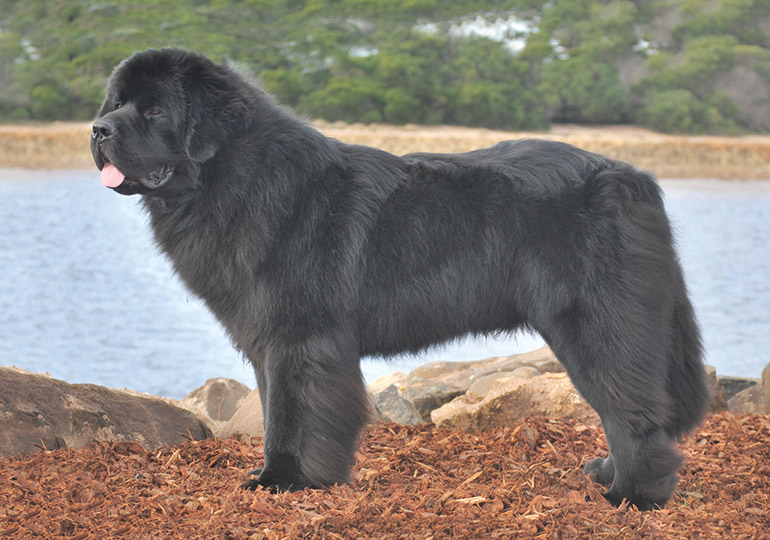Newfoundland
Breed Details
Size:
Exercise Requirements:
Grooming Requirements:
58-62 kg (approx)
12-13 years (approx)

Appearance
The Newfoundland is a strong, massive dog. The head is broad and heavy. The neck and back are strong. The wide muzzle is about as broad as it is deep. The nose is generally black except on bronze coloured dogs, which have brown noses. The deep-set, dark brown eyes are fairly small and spaced wide apart. The catlike feet are webbed. The tail is strong and broad at the base. The double coat is flat and water-resistant. The oily outer coat is coarse and moderately long, either straight or wavy. The undercoat is oily, dense, and soft. The three recognised colours are: dull jet black, brown, white with black markings only - Landseers. For preference black head with a narrow blaze, evenly marked saddle, and black rump extending on to the tail.
History
The Newfoundland may be a descendant of the Viking "bear dogs" or nomadic Indian dogs. Others believe Newfoundland is a close relative of the Labrador. Some believe Newfoundland originated from crosses between Tibetan Mastiffs brought to Canada early in the 1700s. This gentle giant was used for hauling in nets, carrying boat lines to shore, retrieving anything which fell overboard, and rescuing shipwrecked and drowning victims. The breed was also used to haul lumber, pull mail sleds, deliver milk, and carry loads in packs. The Newfoundland was, and still is, an outstanding instinctive water rescue dog.
Temperament
The Newfoundland is a dog with an outstanding, sweet temperament, courageous, generous, peaceable, and intelligent. A calm, patient dog, who is mild with guests, and obedient with its master. They are very devoted, loyal, and trustworthy. They rarely bark but are protective and brave when they need to be. Very sociable and gentle. Generally good with other animals. Patient, playful, and loving with children. Enjoys the outdoors, but also need to be with their family. They love to swim and will lay in water if they get the chance. Newfoundland tends to be very messy when drinking water and often drinks a lot. They do drool, especially after getting a drink, but generally are not one of the worst offenders compared to some other giant breeds. Adult Newfoundlands eat only about as much as a Labrador, but puppies eat more.
Care/Grooming
Newfoundland is a very big dog with lots of hair. Newfoundland's have water-resistant double coats. A Newfoundland's undercoat is typically soft and dense, and the outer coat is coarse and long. Because Newfoundland's have very thick coats, they require frequent grooming to prevent mats and to keep their coats and skin healthy. Going to a dog groomer can be costly, so lots of Newfoundland owners groom their dogs and puppies themselves The undercoat is shed twice a year.

